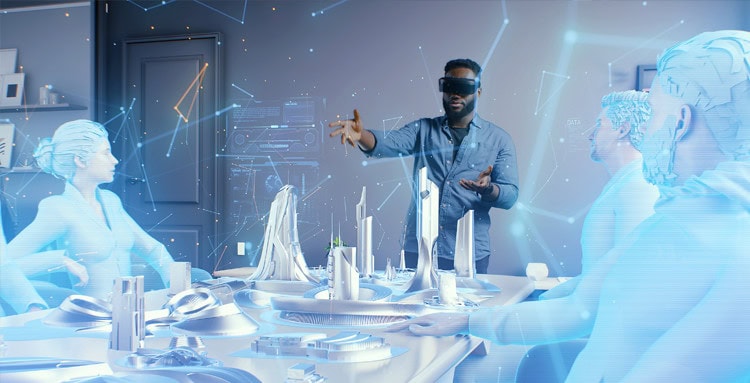
The Metaverse: A Whole New Working World?
Hybrid and remote working have become a post-pandemic norm, and have paved the way for an entirely new working environment – the metaverse. This is a virtual reality environment where employees can meet and interact from anywhere around the world through avatars – digital versions of themselves – which they have designed.
The concept of the metaverse has started to gain significant traction, with a poll conducted by HR Magazine finding that over a third of respondents thought the technology was suitable for business, and that they were excited about using it. Many companies have even started rushing to buy virtual ‘offices’ in prime locations in these simulated universes.
On the one hand, the introduction of a digital working world can offer those working remotely the ability to interact with their colleagues more authentically. However, the rise of the metaverse also brings with it the question of how to approach it from a HR perspective.
How do you monitor diversity and inclusion when people can choose what they want to look like?
The process of designing one’s avatar is important for the metaverse to work. Having face-to-face interaction is what makes this technological development so attractive to organizations, but this will require a different set of people policies to those we currently have in the real world.
For example, when someone is creating their avatar, they will probably want it to look like them – but it will likely be an ‘enhanced’ version of themselves. After all, this is an opportunity to make yourself look the way you have always wanted! This is known as the ‘Proteus effect’ with employees adjusting their height, age, wardrobe, etc. to fit their desired self-image.
However, this risks creating an expectation that avatars should be physically ‘perfect’ which, in turn, could undermine the self-esteem and mental wellbeing of some individuals.
And while altering your avatar to have features which are manifestly different to your own might be considered harmful (or even offensive), organizations will need to decide whether there certain circumstances where significantly changing your avatar’s appearance might be acceptable. For example, if a wheelchair user were allowed to create an avatar which does not use one, would this create a workplace culture where people can be recognised for their ability to do their job rather their physical differences – or one where physical conformity is a requirement for an individual to feel that they belong? These are difficult ethical choices.
How do you design people strategies for people that are no longer physical?
Creating policies surrounding the creation of avatars is one thing, but the way employees behave towards each other in the metaverse workplace in another.
‘Trolling’ is a common internet phenomenon in which people will bully and harass others online through harmful comments. In the context of the workplace, if a colleague is offensive to you online it would probably be considered equally as severe if they were offensive to you in person. Most organizations already have procedures in place to deal with this type of verbal harassment – digital or otherwise.
But what about ‘physical’ harassment in the metaverse?
There have already been issues of avatars being assaulted by virtual colleagues, which begs the question whether this would (or should) be dealt with by employers in the same way they would respond to a similar assault in the real world. If I virtually strike your avatar, is that as bad as actually striking you?
So, the full implications of working in the metaverse are yet to be determined, but it is already clear that the HR strategies and policies we will require for this virtual workplace to be safe and inclusive for every employee will require careful consideration.
And although this may be a vision of the future, organizations should be starting to think about it in the present.